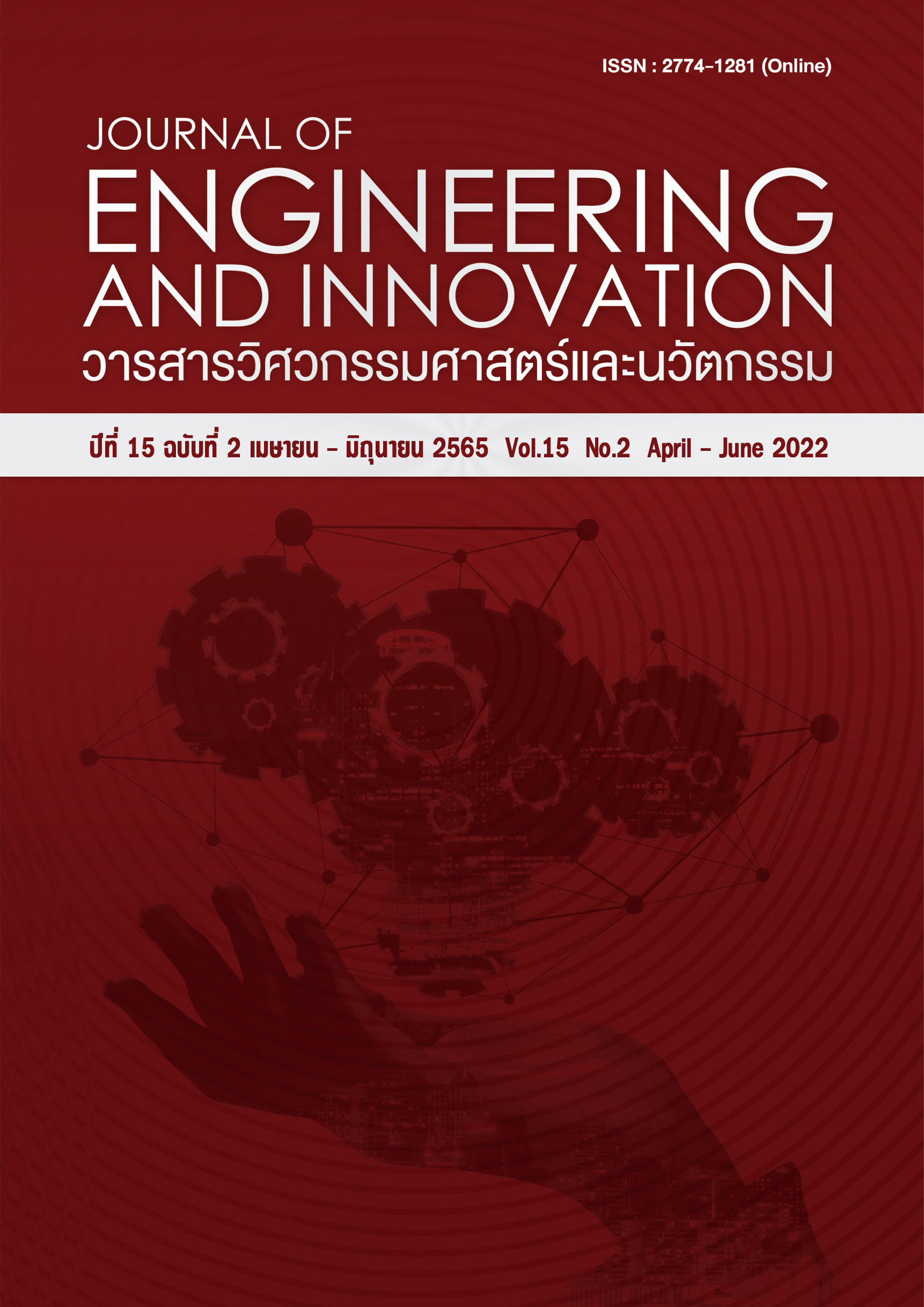Accuracy of 3-d model based on point cloud: a case study of reinforcement concrete building in Khonkaen province
Main Article Content
Abstract
Nowadays, technology is used in construction projects to facilitate workers, planners and other stakeholders in the process of monitoring and evaluating construction progress. This research aims to propose the way to monitor the construction project progress using the unmanned aerial vehicle (UAV) technology and apply with the photogrammetry technology to create a three-dimensional model and visualize the construction overview of the project for quickly monitor and evaluate the construction work. The case study is reinforced concrete building project in Khonkaen province, This research used photos taken from UAV to generate three-dimensional model base on point cloud, The geometry of building was measured manually from the model by its length and area of each part of the model. Then the data was analyzed for the error compared to the actual size of the building from the construction drawings. The results showed the error of the developed model was less than 1%, This paper proved that three-dimensional construction model base on point cloud from construction site images can be used to evaluate construction progress with enough accuracy.
Article Details
References
สมประวิณ มันประเสริฐ. แนวโน้มธุรกิจ/อุตสาหกรรม ปี 2562-64. 2562
วิสูตร จิระดำเกิง. การบริหารงานก่อสร้าง (Construction Management). 2nd ed. สำนักพิมพ์กรรณกวี; 2558. 562 p.
Turner O. Guide to the Project Management Body of Knowledge PMBOK Guide. Project Management Institute, Pennsylvania. 2017.
Golparvar-Fard M, Peña-Mora F, Savarese S. Monitoring of construction performance using daily progress photograph logs and 4d as-planned models. InComputing in Civil Engineering (2009) 2009 (pp. 53-63).
Bohn JS, Teizer J. Benefits and barriers of construction project monitoring using high-resolution automated cameras. Journal of construction engineering and management. 2010 Jun;136(6):632-40.
Zhang C, Arditi D. Automated progress control using laser scanning technology. Automation in construction. 2013 Dec 1;36:108-16.
Kiziltas S, Akinci B, Ergen E, Tang P, Gordon C. Technological assessment and process implications of field data capture technologies for construction and facility/infrastructure management. Journal of Information Technology in Construction (ITcon). 2008 Apr 10;13(10):134-54.
Golparvar-Fard M, Pena-Mora F, Savarese S. Automated progress monitoring using unordered daily construction photographs and IFC-based building information models. Journal of Computing in Civil Engineering. 2015 Jan 1;29(1):04014025.
Ibrahim YM, Kaka AP. Review of photographic/imaging applications in construction. The Built & Human Environment Review. 2008;1(1):99-117.
Memon ZA, Majid MZ, Mustaffar M. An automatic project progress monitoring model by integrating auto CAD and digital photos. InComputing in Civil Engineering (2005) 2005 (pp. 1-13).
Rattanapongwanich S, Srinavin K, Kusonkhum W, Leungbootnak N, Charnwasununth P. Accuracy of 3-D Model Based on Point Cloud: A New Technology for Construction Progress Evaluation. Int J Eng Technol. 2020 May;27–30.
กิตติศักดิ์ ศรีกลาง. การสำรวจด้วยภาพถ่ายทางอากาศ (Aerial Photogrammetry). 2559. 142 p.
Quirós Rosado EM. Introduction to applied photogrammetry and cartography for civil engineering. 2018.
ไพศาล สันติธรรมนนท์. การรังวัดด้วยภาพดิจิทัล (Digital Photogrammetry). 2nd ed. 2555.
Agisoft PhotoScan. Useful Tips on Image Capture: How to Get an Image Dataset that Meets Metashape Requirements? 2006.
Dai F, Feng Y, Hough R. Photogrammetric error sources and impacts on modeling and surveying in construction engineering applications. Visualization in Engineering. 2014 Dec 1;2(1):2.
Detchev I, Mazaheri M, Rondeel S, Habib A. Calibration of multi-camera photogrammetric systems. The International Archives of Photogrammetry, Remote Sensing and Spatial Information Sciences. 2014;40(1):101.

